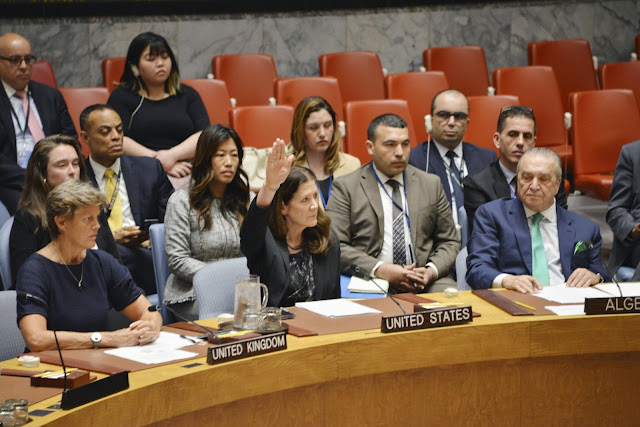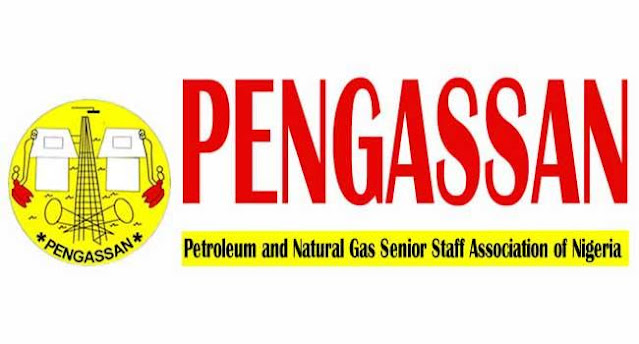On August 27, 2025, fourteen of the fifteen members of the United Nations Security Council issued a powerful joint call for an immediate ceasefire in Gaza, highlighting a dire humanitarian crisis and the unprecedented confirmation of famine conditions in the region. The United States, a permanent member and key ally of Israel, was the sole holdout, maintaining its stance against ceasefire resolutions. The joint statement, delivered at a press conference at UN headquarters in New York, underscored the worsening situation in Gaza, where newly released data from the Integrated Food Security Phase Classification (IPC) has confirmed famine in parts of the enclave for the first time in the Middle East. Describing the crisis as a “man-made famine,” representatives from countries including Guyana, Slovenia, Algeria, China, Denmark, France, Greece, Pakistan, Panama, South Korea, Russia, Sierra Leone, Somalia, and the United Kingdom expressed profound alarm and demanded urgent action to address the humanitarian emergency, release hostages, ensure unimpeded aid access, and halt Israel’s planned ground offensive in Gaza City. This article delves into the details of the UN statement, the humanitarian crisis in Gaza, the implications of the famine declaration, and the broader geopolitical context shaping the international response.
A Unified Call for Ceasefire
The joint press conference at UN headquarters was a rare display of near-unanimous consensus among the Security Council’s members, with fourteen nations standing together to address the escalating crisis in Gaza. The absence of the United States, which has consistently vetoed ceasefire resolutions, highlighted the deep divisions within the Council on the Israeli-Palestinian conflict. The representatives’ unified message was clear: the situation in Gaza has reached a critical point, requiring immediate and decisive action to prevent further loss of life and alleviate suffering.
Trishala Persaud, Guyana’s deputy permanent representative to the UN, served as a leading voice during the press conference, articulating the group’s collective concern. “We express our profound alarm and distress at the IPC data on Gaza, published last Friday,” Persaud stated. “This is the first time famine has been officially confirmed in the Middle East region. Every day, more persons are dying as a result of malnutrition. Many of them children.” Her remarks underscored the gravity of the crisis, emphasizing the human toll of the famine and its disproportionate impact on vulnerable populations, particularly children.
Persaud was joined by representatives from a diverse group of nations, including Slovenia, Algeria, China, Denmark, France, Greece, Pakistan, Panama, South Korea, Russia, Sierra Leone, Somalia, and the United Kingdom. The coalition’s composition reflected a broad cross-section of global perspectives, spanning Africa, Asia, Europe, and Latin America, united by a shared commitment to addressing the humanitarian emergency in Gaza. Their joint statement was a powerful rebuke of the ongoing conflict and a call for immediate action to halt the violence and deliver aid to those in need.
The Famine Crisis in Gaza
The confirmation of famine conditions in Gaza, as reported by the IPC, marks a tragic milestone in the region’s history. The IPC, a global initiative that assesses food security and malnutrition, released data on August 22, 2025, indicating that parts of Gaza have met the criteria for famine, defined as extreme food scarcity affecting at least 20% of the population, with severe malnutrition and mortality rates exceeding critical thresholds. This is the first time famine has been officially declared in the Middle East, a region that has historically avoided such extreme levels of food insecurity due to its geopolitical and economic dynamics.
The famine in Gaza is described as a “man-made crisis,” a term used by Persaud to highlight the role of human actions in exacerbating the situation. “The use of starvation as a weapon of war is clearly prohibited under international humanitarian law,” she stated, pointing to the deliberate restrictions on food and aid access that have contributed to the crisis. The ongoing conflict, coupled with blockades and military operations, has severely limited the delivery of essential supplies, including food, water, and medical resources, to Gaza’s population of over 2 million people.
Humanitarian agencies have warned that the famine is already claiming lives, with children being particularly vulnerable. Malnutrition-related deaths have risen sharply, and the lack of access to clean water, healthcare, and adequate shelter has compounded the crisis. The IPC data paints a grim picture of widespread hunger, with families resorting to extreme measures to survive, such as consuming contaminated food or forgoing meals to feed their children. The situation is particularly dire in northern Gaza, where access to aid has been most restricted, leading to acute food shortages and a breakdown of basic services.
Slovenia’s Call for Urgent Action
Ondina Drobic, Slovenia’s deputy permanent representative, echoed Persaud’s concerns and outlined specific demands to address the crisis. “The humanitarian emergency must be addressed without delay, and Israel must reverse course,” Drobic said. “We have seen what is possible to achieve during a ceasefire.” Her remarks highlighted the transformative potential of a ceasefire, which could enable the delivery of humanitarian aid, facilitate the release of hostages, and create conditions for rebuilding Gaza’s shattered infrastructure.
Drobic’s demands included four key actions: an immediate ceasefire, the release of hostages held by Hamas, unimpeded humanitarian access to Gaza, and a halt to Israel’s planned ground offensive in Gaza City. These measures reflect a comprehensive approach to addressing the crisis, combining immediate relief with steps to de-escalate the conflict and prevent further deterioration. The call for unimpeded humanitarian access is particularly critical, as aid organizations have faced significant obstacles in delivering supplies to Gaza, including bureaucratic delays, security risks, and restrictions imposed by the conflict.
The mention of Israel’s planned ground offensive in Gaza City underscores the urgency of the situation. Military operations in densely populated urban areas risk exacerbating the humanitarian crisis, displacing more families and further limiting access to essential resources. The coalition’s demand to halt this offensive reflects a broader concern about the escalation of violence and its devastating impact on civilians.
The U.S. Stance and Geopolitical Tensions
The United States’ decision to abstain from the joint call for a ceasefire highlights the complex geopolitical dynamics surrounding the Israeli-Palestinian conflict. As a permanent member of the Security Council with veto power, the U.S. has consistently blocked resolutions calling for a ceasefire, arguing that Israel has a right to defend itself against attacks by Hamas and other militant groups. This position has placed the U.S. at odds with much of the international community, which increasingly views a ceasefire as essential to addressing the humanitarian crisis in Gaza.
The U.S.’s support for Israel is rooted in a long-standing strategic alliance, bolstered by shared security interests and historical ties. The Biden administration has emphasized Israel’s right to respond to attacks, particularly following Hamas’s actions, while also expressing concern about the humanitarian toll of the conflict. However, the U.S.’s repeated vetoes of ceasefire resolutions have drawn criticism from other Security Council members and humanitarian organizations, who argue that the lack of a ceasefire is prolonging the suffering of Gaza’s civilians.
The absence of U.S. support for the joint statement underscores the challenges of achieving consensus on the Israeli-Palestinian issue within the Security Council. The coalition of fourteen nations represents a significant majority, reflecting growing international pressure for a resolution to the conflict. However, the U.S.’s veto power means that any binding Security Council resolution would likely face obstacles, highlighting the need for diplomatic efforts to bridge the divide.
The Humanitarian Crisis in Context
The famine in Gaza is part of a broader humanitarian crisis that has been unfolding since the escalation of the Israeli-Palestinian conflict in recent years. The conflict, rooted in decades of territorial disputes, political tensions, and violence, has created a dire situation for Gaza’s residents. The enclave, home to over 2 million people, is one of the most densely populated areas in the world, with limited access to resources and a heavily restricted economy due to blockades imposed by Israel and Egypt.
The ongoing conflict has led to widespread destruction of infrastructure, including homes, schools, hospitals, and water systems, leaving much of Gaza’s population without basic necessities. The blockade has restricted the flow of goods, including food, fuel, and medical supplies, exacerbating poverty and unemployment. The combination of these factors has created a perfect storm, culminating in the famine conditions reported by the IPC.
Children are among the hardest hit, with malnutrition rates soaring and long-term health consequences looming. Humanitarian agencies warn that without immediate intervention, the death toll could rise sharply, particularly among vulnerable groups such as infants, pregnant women, and the elderly. The crisis has also strained Gaza’s healthcare system, which is struggling to cope with the influx of patients amidst shortages of medical supplies and personnel.
International Pressure and the Path Forward
The joint statement by fourteen Security Council members reflects mounting international pressure to address the crisis in Gaza. The confirmation of famine conditions has galvanized global attention, with humanitarian agencies, governments, and civil society organizations calling for urgent action. The coalition’s demands for a ceasefire, hostage release, and humanitarian access align with broader calls from the international community to prioritize civilian lives and work toward a sustainable resolution to the conflict.
Previous ceasefires in the region have demonstrated the potential for humanitarian progress. Temporary pauses in hostilities have allowed aid organizations to deliver food, water, and medical supplies, providing critical relief to Gaza’s residents. However, these efforts have often been short-lived, underscoring the need for a more permanent solution to address the root causes of the crisis.
The coalition’s call to halt Israel’s planned ground offensive in Gaza City is particularly significant, as military escalation could further destabilize the region and exacerbate the humanitarian crisis. By emphasizing the need for unimpeded humanitarian access, the Security Council members are advocating for a framework that prioritizes civilian welfare and ensures that aid reaches those in need without delay.
Challenges and Opportunities for Resolution
The path to resolving the crisis in Gaza is fraught with challenges, including deep-seated political divisions, ongoing violence, and logistical barriers to aid delivery. The U.S.’s opposition to a ceasefire complicates efforts to achieve a unified Security Council response, highlighting the need for diplomatic engagement to bridge differing perspectives. Engaging regional actors, such as Egypt and Qatar, which have played mediating roles in past negotiations, could help facilitate dialogue and build momentum for a ceasefire.
The confirmation of famine conditions also presents an opportunity to galvanize global support for humanitarian efforts. International donors, including governments, multilateral organizations, and private entities, can play a critical role in scaling up aid to Gaza, addressing immediate needs, and supporting long-term recovery. Investments in rebuilding infrastructure, improving food security, and strengthening healthcare systems will be essential to preventing future crises.
Moreover, the crisis underscores the importance of addressing the root causes of the Israeli-Palestinian conflict, including territorial disputes, political recognition, and economic inequality. A comprehensive peace process, supported by the international community, could pave the way for a sustainable resolution, ensuring the safety and well-being of both Palestinians and Israelis.
Conclusion
The joint call by fourteen UN Security Council members for an immediate ceasefire in Gaza represents a critical moment in the international response to the region’s humanitarian crisis. The confirmation of famine conditions, as reported by the IPC, has brought renewed urgency to the situation, highlighting the devastating impact of the conflict on Gaza’s civilians, particularly children. The coalition’s demands for a ceasefire, hostage release, unimpeded humanitarian access, and a halt to Israel’s planned offensive reflect a comprehensive approach to addressing the crisis and preventing further loss of life.
The absence of U.S. support underscores the geopolitical complexities of the Israeli-Palestinian conflict, but the near-unanimous stance of the Security Council signals growing global consensus on the need for action. As the international community grapples with the challenges of delivering aid and achieving peace, the crisis in Gaza serves as a stark reminder of the human cost of conflict and the urgent need for compassion, cooperation, and resolution. The path forward will require sustained diplomatic efforts, humanitarian commitment, and a shared vision for a future where all residents of the region can live in dignity and security.






